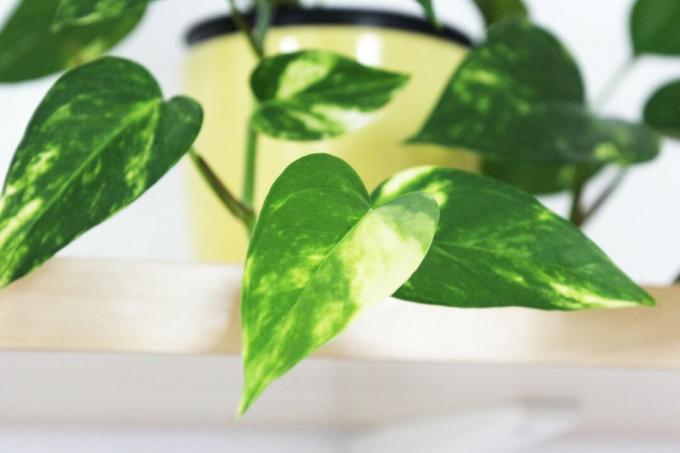
the Monstera variegata is a mutation of the popular houseplant Monstera deliciosa, which is difficult to obtain and very expensive. In this article, we will tell you why this is so.
In a nutshell
- Monstera variegata very expensive because it is rare and difficult to breed
- unrooted cuttings cost an average of 50 euros
- larger plants for 150 euros to several hundred euros
- usually only available as cuttings
- Gene mutation to propagate only via cuttings, not via seeds
contents
- Prices
- Why is Monstera variegata expensive?
- frequently asked Questions
Prices
Lovers of variegated indoor plants must look at the different varieties of the Monstera variegata – would actually be botanically correct Monstera deliciosa 'Variegata' - dig deep into your pocket. In May 2022 the prices were for mature plants as well as for cuttings from various suppliers on average at:
- Root pieces for self-cultivation: between 30 and 80 euros
- individual sheets or Cuttings: between 40 and 70 euros
- rooted and slightly larger plants: between 80 and 280 euros
How expensive are the offshoots or Plants actually are depends on their size as well as their variegation: if only few white leaf spots are present is the Monstera variegatacheaper to have as a specimen with many large or even almost entirely white leaves. the latter are particularly rare and can up to several hundred euros costs.

Tip: There are other popular indoor plants with variegated leaves, such as ivy, spathiphyllum, Dieffenbachia or Aralia. These are also available as "Variegata".
Why is Monstera variegata expensive?
While a large Monstera with normal, dark green leaves can be purchased for around 15 to 25 euros, for an unrooted cutting alone you have to pay the Variegata pay about twice as much. Read here why.
In the Monstera variegata is a plant in which a accidental gene mutation in individual sheets contain little or no chlorophyll is. The chlorophyll is responsible for the rich, dark green leaf color. The fewer individual leaf cells contain, the more white the affected leaves have. The leaf pattern is very different. There are never two leaves of the same color. In addition, the breeding and propagation such specimens difficult and tedious, because
- the mutation is unstable
- the leaves can therefore turn green
- Green leaves have to be cut back again and again
- variegated plants grow slower
- and are harder to root
For this reason, mainly cuttings and leaves of Monstera variegata offered because the cultivation of rooted plants is even more expensive and time-consuming.

A notice: The cream-colored spotted Monstera 'Thai Constellation' is also very expensive, but it did not result from a natural mutation. This variety is purposefully grown by tissue culture in a laboratory in Thailand.
frequently asked Questions
On Amazon and other sales platforms on the Internet, offers such as "100 seeds Monstera Variegata" can often be found for a few euros. Don't fall for it! Without exception, these are dubious sellers. The mutation that leads to leaf variegation can only be inherited through vegetative propagation via leaf cuttings or leaves, but never via seeds.
If you already have a Monstera variegata, you can propagate it using head cuttings or stem cuttings. Prune these in spring and root them under strained air (i.e. in a mini greenhouse), in a water glass or straight into soil. However, they need a lot of patience, as the cuttings have difficulty forming roots and grow very slowly.
If your Monstera variegata turns green, it is too dark and urgently needs more light. Place the plant as brightly as possible - the variegated varieties should be much lighter than their dark green relatives, which in turn tolerate more shade. In addition, the green leaves should be cut away so that new leaves with white spots can grow back. Leaves that have turned green remain green and no longer get white spots.
